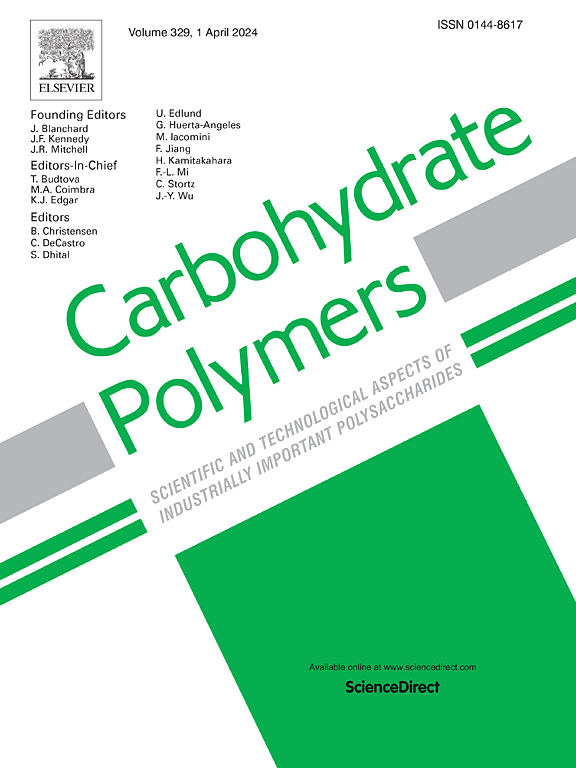利用改性纤维素纳米晶涂层优化纸吸管的多层相互作用,提高聚乳酸结晶和微塑料捕获效率
IF 10.7
1区 化学
Q1 CHEMISTRY, APPLIED
引用次数: 0
摘要
一次性塑料占海洋垃圾的80%,威胁着水生生态系统。随着时间的推移,这些塑料会分解成有害的微塑料(MPs),它们可能会进入人体。本研究提出了一种新型PLA-COx涂层(其中“x”代表纤维素纳米晶体和有机改性蒙脱土(CNC-OMMT)的浓度),旨在通过模仿中国蜡烛浸渍成型来提高纸吸管的性能。结合CNC-OMMT通过界面诱导动力学和PLA结构内的多层次相互作用促进结晶。同时,纸纤维网络与PLA-COx复合材料之间的层与层之间的强相互作用导致了高达48 MPa的令人印象深刻的拉伸强度。120 min后的吸水率仅为4.4%,在各种饮料模拟剂中的迁移率保持在标准限度内。值得注意的是,PLA-COx复合秸秆在3个月内的土壤降解率为50.7%。此外,废弃秸秆通过物理捕集和化学吸附有效捕获水中的聚苯乙烯微塑料(PS MPs),在12 h内的捕集效率为45.8%,从而实现了废物的可持续管理。本文章由计算机程序翻译,如有差异,请以英文原文为准。

Optimizing multilevel interactions of paper straws using modified cellulose nanocrystal-based coatings to enhance PLA crystallization and microplastic capture efficiency
Disposable plastics make up 80 % of marine waste, threatening aquatic ecosystems. Over time, these plastics decompose into harmful microplastics (MPs), which can potentially enter the human body. This study presents a novel PLA-COx coating (where ‘x’ represents the concentration of cellulose nanocrystals and organically modified montmorillonite (CNC-OMMT)), designed to enhance the performance of paper straws by mimicking Chinese candle dip molding. Incorporating CNC-OMMT encourages crystallization through interface-induced dynamics and multi-level interactions within the PLA structure. At the same time, the strong layer-by-layer interactions between the paper fiber network and the PLA-COx composite have led to an impressive tensile strength of up to 48 MPa. The water absorption rate after 120 min is only 4.4 %, and the migration rate in various beverage simulants remains within the standard limit. Notably, the PLA-COx composite straws exhibited a degradation rate of 50.7 % in soil within three months. Additionally, the discarded straws effectively captured polystyrene microplastics (PS MPs) in water through physical entrapment and chemical adsorption, demonstrating a stable and efficient capture efficiency of 45.8 % over 12 h, thereby achieving sustainable waste management.
求助全文
通过发布文献求助,成功后即可免费获取论文全文。
去求助
来源期刊

Carbohydrate Polymers
化学-高分子科学
CiteScore
22.40
自引率
8.00%
发文量
1286
审稿时长
47 days
期刊介绍:
Carbohydrate Polymers stands as a prominent journal in the glycoscience field, dedicated to exploring and harnessing the potential of polysaccharides with applications spanning bioenergy, bioplastics, biomaterials, biorefining, chemistry, drug delivery, food, health, nanotechnology, packaging, paper, pharmaceuticals, medicine, oil recovery, textiles, tissue engineering, wood, and various aspects of glycoscience.
The journal emphasizes the central role of well-characterized carbohydrate polymers, highlighting their significance as the primary focus rather than a peripheral topic. Each paper must prominently feature at least one named carbohydrate polymer, evident in both citation and title, with a commitment to innovative research that advances scientific knowledge.
 求助内容:
求助内容: 应助结果提醒方式:
应助结果提醒方式:


